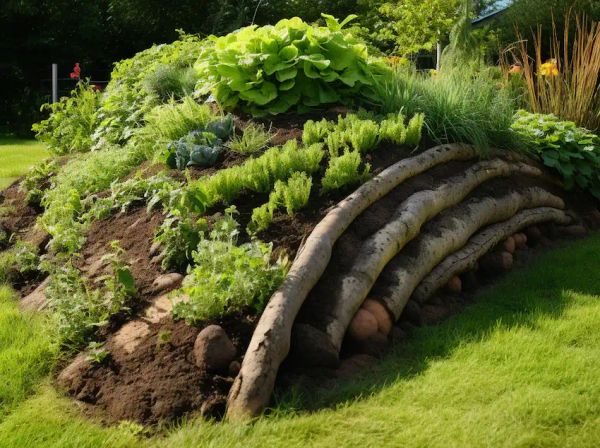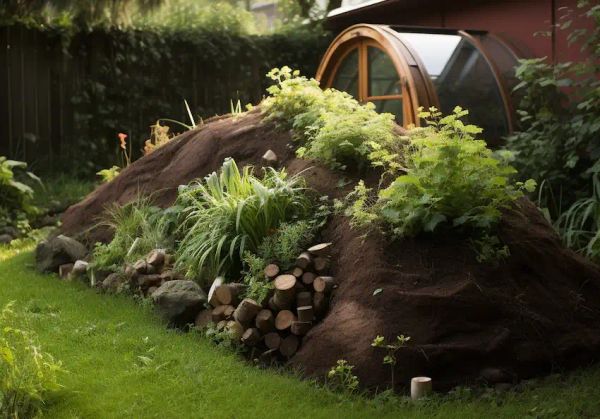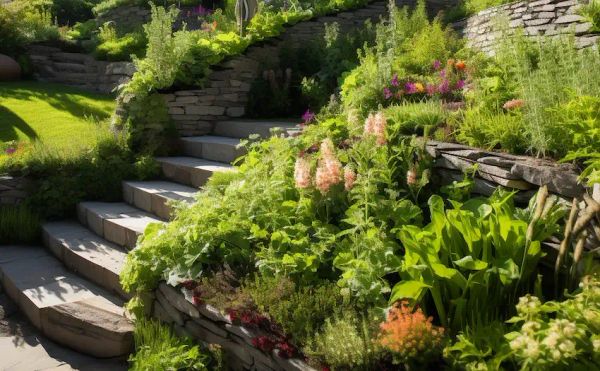Are you looking for ways to make your garden more efficient? Then you should consider steep hugel beds. This innovative gardening technique is gaining popularity among gardeners who want to enhance soil fertility, save water, and increase plant productivity. In this article, we will explain what steep hugel beds are, why they come recommended by experts like Sepp Holzer, and how you can create your own to maximize your garden’s efficiency.
What Are Steep Hugel Beds?
Steep hugel beds are an elevated version of traditional hugelkultur beds. The term “hugelkultur” means “hill culture” in German, and it involves creating raised garden beds filled with organic materials like logs, branches, leaves, and compost. As these materials decompose over time, they provide a continuous source of nutrients to the plants.
In the case of steep hugel beds, the main difference is the steeper slope or incline. This design offers several advantages for gardeners looking to make the most of their garden’s potential.
Why Sepp Holzer Recommends Steep Hugel Beds
Sepp Holzer, a renowned Austrian farmer and permaculture practitioner, highly recommends steep hugel beds for several reasons:

1. Avoiding Soil Compaction:
One common issue with traditional hugelkultur beds is soil compaction. Over time, the pressure applied by gardeners and natural forces can lead to compacted soil. Steep hugel beds help prevent this problem by minimizing foot traffic on the bed’s surface due to their steep slope.
2. More Planting Area:
Steeper beds mean more planting area in your garden. With this increased space, you have the opportunity to grow more crops and diversify your garden.
3. Easy Harvesting:
The height of steep hugel beds makes harvesting easier since you don’t need to bend down as much. This ergonomic advantage significantly reduces strain on your back and knees.
4. Improved Water Retention:
Similar to traditional hugelkultur beds, steep hugel beds excel at water retention. The organic materials within the bed act like sponges, soaking up moisture during rainy periods and gradually releasing it to the plants during dry spells. This can help reduce the need for irrigation and make your garden more resilient to drought.
Creating Your Steep Hugel Bed
Now that you understand the benefits of steep hugel beds, you might be eager to create one for your garden. Here are the basic steps to follow:

1. Choose the Perfect Location:
Find a suitable location for your steep hugel bed, ensuring it receives ample sunlight and has good drainage.
2. Gather Your Materials:
Collect logs, branches, leaves, and compost materials. Use larger logs as the base, followed by smaller branches and organic matter.
3. Build the Bed:
Stack the materials to create a steep raised bed, making sure to achieve stability and an even slope. The height of the bed can vary depending on your preference.
4. Plant Your Garden:
Once the bed is established, it’s time to plant your desired crops. Consider using companion planting and crop rotation strategies to maximize productivity.
5. Maintain Your Bed:
Monitor moisture levels and add organic matter as needed to maintain soil fertility. This will ensure the long-term health and productivity of your steep hugel bed.
By following these steps and taking Sepp Holzer’s advice on steep hugel beds, you can create a garden that is not only efficient and productive but also conserves water, prevents soil compaction, and simplifies harvesting. Start implementing this sustainable gardening practice and reap the benefits of a thriving and environmentally-friendly garden.






